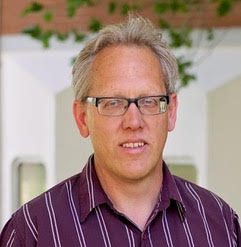Professional Development and Changes in Teachers’ Teaching Practices: A Pilot Study
Article ID: 5539
DOI: https://doi.org/10.30564/jiep.v7i1.5539
Abstract
Current efforts to improve physical education programs involve providing teachers with quality preparation professional development opportunities, especially for elementary classroom teachers (ECTs) who deliver physical education without adequate preparation (DeCorby et al., 2005).[5] However, little is known about the role of continuous professional development (CPD) in changes in ECTs’ practices regarding teaching physical education (Parker et al., 2022).[23] This study utilized visual methods to explore changes in ECTs’ practices regarding physical education teaching throughout their participation in a state-funded, five-month-long CPD initiative. The participants were four elementary classroom teachers in rural California. The CPD initiative consisted of a three-day summer institute and two follow-up sessions. Participant-generated visual diaries and focus group interviews were used to capture teacher practice changes. Findings revealed three themes: a) A focus on standards-based instruction facilitated teacher’s change; b) Involvement in a community of learners can be a powerful source of change; and c) Teacher change is a time-consuming process. This study highlights that ECTs who receive inadequate training in physical education teacher education are more likely to have a lack of competence and confidence in teaching physical education. The CPD activities can potentially enhance ECTs’ skills in planning and teaching practice, thereby boosting their confidence.
Keywords
Full Text:
 PDF
PDF
References
[1] Azzarito, L. (2012). Photography as a pedagogical tool for shedding light on ‘bodies-at-risk’ in physical culture. Visual Studies, 27(3), 295–309. doi:10.1080/1472586X.2012.717746
[2] Carney, C., & Armstrong, N. (1996). The provision of physical education in primary initial teacher training courses in England and Wales. European Physical Education Review, 2(1), 64-74. https://doi.org/10.1177/1356336X9600200107
[3] Creswell, J. (2009). Research design: Qualitative, quantitative, and mixed methods approaches. Sage.
[4] Darling-Hammond, L., & McLaughlin, M. W. (1995). Policies that support professional development in an era of reform. Phi Delta Kappan, 76(8), 597-604.
[5] DeCorby, K., Halas, J., Dixon, S., Wintrup, L., & Janzen, H. (2005). Classroom teachers and the challenges of delivering quality physical education. The Journal of Educational Research, 98, 208–220. https://doi.org/10.3200/JOER.98.4.208-221
[6] Desimone, L. M. (2011). A primer on effective professional development. Phi Delta Kappan, 92(6), 68-71. https://doi.org/10.1177/003172171109200616
[7] Dyson, B. (2014). Quality physical education: A commentary on effective physical education teaching. Research Quarterly for Exercise and Sport, 85(2), 144-152. https://doi.org/10.1080/02701367.2014.904155
[8] Faucette, N., McKenzie, T. L., & Sallis, J. F. (1992). Self-contained versus team teaching: An analysis of a physical education intervention by classroom teachers. Journal of Teaching in Physical Education, 11(3), 268–287. https://doi.org/10.1123/jtpe.11.3.268
[9] Faucette, N., Nugent, P., Sallis, J. F., & McKenzie, T.L. (2002). “I’d rather chew on aluminum foil.” Overcoming classroom teachers’ resistance to teaching physical education. Journal of Teaching in Physical Education, 21, 287–308. https://doi.org/10.1123/jtpe.21.3.287
[10] Faulkner, G. E., Dwyer, J. J., Irving, H., Allison, K. R., Adlaf, E. M., & Goodman, J. (2008). Specialist or nonspecialist physical education teachers in Ontario elementary schools: Examining differences in opportunities for physical activity. Alberta Journal of Educational Research, 54(4), 407-419.
[11] Fletcher, T., Mandigo, J., & Kosnik, C. (2013). Elementary classroom teachers and physical education: Change in teacher-related factors during pre-service teacher education. Physical Education and Sport Pedagogy, 18(2), 169-183. https://doi.org/10.1080/17408989.2011.649723
[12] Glaser, B. G., & Strauss, A. L. (1967). The discovery of grounded theory: Strategies for qualitative research. Aldine Publishing.
[13] Guskey, T. R. (2002). Professional development and teacher change. Teachers and Teaching, 8, 381-391. https://doi.org/10.1080/135406002100000512
[14] Jones, L., & Green, K. (2017). Who teaches primary physical education? Change and transformation through the eyes of subject leaders. Sport, Education and Society, 22(6), 759-771. https://doi.org/10.1080/13573322.2015.1061987
[15] Lynch, T., & Soukup Sr, G. J. (2017). Primary physical education (PE): School leader perceptions about classroom teacher quality implementation. Cogent Education, 4(1), 1348925. https://doi.org/10.1080/2331186X.2017.1348925
[16] McIntosh, P. (2010). Action research and reflective practice: Creative and visual methods to facilitate reflection and learning. Routledge.
[17] McKenzie, T. L., Alcaraz, J. E., Sallis, J. F., & Faucette, F. N. (1998). Effects of a physical education program on children’s manipulative skills. Journal of Teaching in Physical Education, 17, 327–341. https://doi.org/10.1123/jtpe.17.3.327
[18] McKenzie, T. L., Sallis, J. F., Kolody, B., & Faucette, F. N. (1997). Long-term effects of a physical education curriculum and staff development program: SPARK. Research Quarterly for Exercise and Sport, 68, 280–291. https://doi.org/10.1080/02701367.1997.10608009
[19] Miles, M., Huberman, A., & Saldaña, J. (2019). Qualitative data analysis: A methods sourcebook. Sage.
[20] Morgan, P. J., & Bourke, S. F. (2005). An investigation of preservice and primary school teachers’ perspectives of PE teaching confidence and PE teacher education. ACHPER Healthy Lifestyles Journal, 52(1), 7–13.
[21] Morgan, P. J., & Hansen, V. (2007). Recommendations to improve primary school physical education: Classroom teachers' perspective. The Journal of Educational Research, 101(2), 99-108. https://doi.org/10.3200/JOER.101.2.99-112
[22] Morgan, P. J., & Hansen, V. (2008). The relationship between PE biographies and PE teaching practices of classroom teachers. Sport, Education and Society, 13(4), 373-391. https://doi.org/10.1080/13573320802444994
[23] Parker, M., Patton, K., Gonçalves, L., Luguetti, C., & Lee, O. (2022). Learning communities and physical education professional development: A scoping review. European Physical Education Review, 28(2), 500-518.
[24] Parker, K., Patton, K., Madden, M., & Sinclair, C. (2010). From committee to community: The development and maintenance of a community of practice. Journal of Teaching in Physical Education, 29, 337-357. https://doi.org/10.1123/jtpe.29.4.337
[25] Parker, M., Patton, K., & Sinclair, C. (2016). ‘I took this picture because…’: Accessing teachers' depictions of change. Physical Education and Sport Pedagogy, 21(3), 328-346. https://doi.org/10.1080/17408989.2015.1017452
[26] Patton, K., & Parker, M. (2015). “I learned more at lunchtime”: Guideposts for reimagining professional development. Journal of Physical Education, Recreation and Dance, 86(1), 23-29. https://doi.org/10.1080/07303084.2014.978421
[27] Petrie, K. (2010). Creating confident, motivated teachers of physical education in primary schools. European Physical Education Review, 16(1), 47–64. https://doi.org/10.1177/1356336X10369200
[28] Pink, S. (2012). Advances in visual methodology. Sage.
[29] Saldaña, J. (2013). The coding manual for qualitative researchers. Sage.
[30] Society of Health and Physical Educators America. (2016). The 2016 Shape of the Nation. Retrieved from https://www.shapeamerica.org/uploads/pdfs/son/Shape-of-the-Nation- 2016_web.pdf
[31] Tsangaridou, N. (2012). Educating primary teachers to teach physical education. European Physical Education Review, 18(3), 275-286. https://doi.org/10.1177/1356336X12450788
[32] Xiang, P., Lowy, S., & McBride, R. (2002). The impact of a field-based elementary physical education methods course on preservice classroom teachers’ beliefs. Journal of Teaching in Physical Education, 21, 145–161. https://doi.org/10.1123/jtpe.21.2.145
Refbacks
- There are currently no refbacks.
 +65 65881289
+65 65881289 contact@bilpublishing.com
contact@bilpublishing.com






